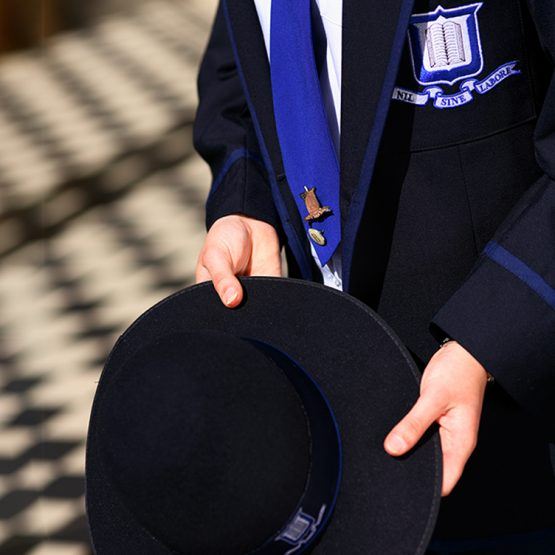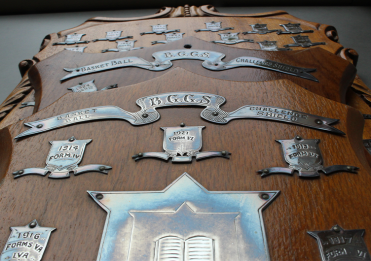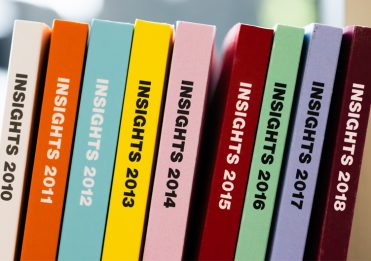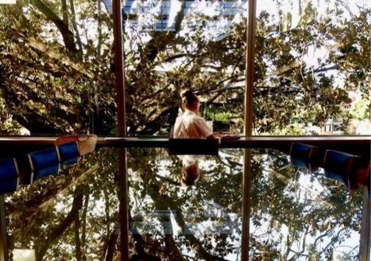To the 21st century Grammar girl, the idea of excursions and trips to far-flung, overseas, exotic locations is not unusual, and it has become expected that a Grammar education includes such activities. However, when did this idea, that learning does not have to be confined to the classroom, or the Gregory Terrace campus, originate? One item from the School archive reveals the answer: the Itinerary and Travel Notes for the second Young Queenslanders’ Tour.

1929 The Itinerary and Travel Notes booklet given to each student
During the 1929 Midwinter vacation, 39 Grammar girls, with 30 other students from Brisbane Grammar School and Somerville House, and nine teachers, acting as chaperones, departed on the second Young Queenslanders’ Tour. A Tourist Bureau official travelled with them to supervise arrangements and assist with caring for the safety, comfort, and enjoyment of the pupils. This was the first expedition undertaken by Grammar girls and, on Monday 1 July, they left Brisbane for the tour of North Queensland on the excitingly named Townsville mail train.
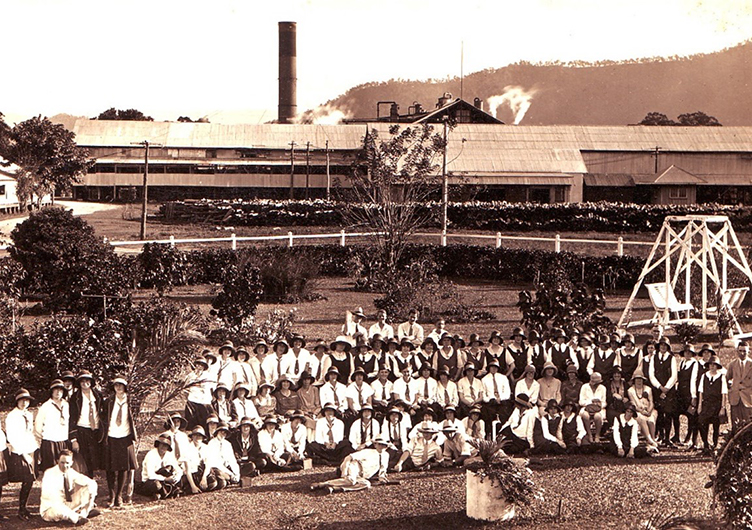
Group visiting Gordonvale Sugar Mill
The three Girls Grammar staff were Misses Marjorie Fielding, Mary Alexis Macmillan, and Doris Kennedy. Both Doris and Mary Alexis were past students, and both had long teaching careers at the School, retiring together in 1965. Life might have turned out quite differently for Mary Alexis. Like many young women during the war years, her fiancé, John Fryer (whom The University of Queensland’s Fryer Library is named after), returned from the Front wounded and sadly died before they were married.
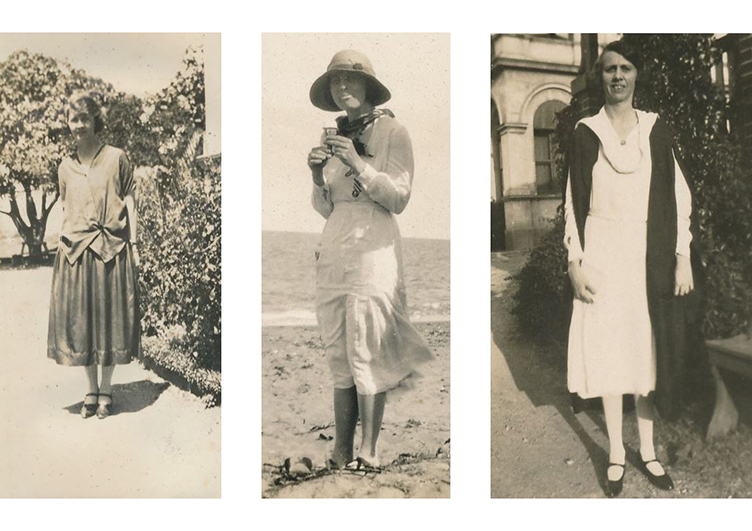
Misses Marjorie Fielding, Mary Alexis Macmillan and Doris Kennedy
The Cairns Post found this school tour significant enough to record, in detail, the names of all students. The Girls Grammar participants were Molly Groom, Bessie Parker, Ruth Munro, Daisy Wright, Lorna Plaisted, Margaret Julius, Hazel Ellen, Gwen Robson, Doris Harland, Alice Trout, Pauline Joice, Florence Stirling, Annie Carter, Sheila Reid, Alma Bushby, Edna Finlayson, May Hardcastle, Dorothy Siemon, J Turley (most likely Joan Tinley), Beatrice Ferricks, Barbara Watson, Kathleen Dodwell, Edna Bentley, Jean Storie, Thelma Bretherton, Jean Tolmie, Lucy May Butt, Edna Garden, Hazel Fogg, Betty Thorpe, Iris Sandaver, Enid Dunlop, Edith Burnett, Vonda Glover, Dorothy Nicholls, Jean Foulis, and Dorothy Taylor, and two girls who have special links to items in the archive, Grace Wright and Alma Hartshorn.
The previously mentioned itinerary booklet held in the archive has the name Miss Grace Wright written in pencil on the cover. We can assume it was a treasured possession, holding many happy memories because Grace kept it all her life and, when her possessions were auctioned, it was spotted by another past student, Jill Phillips, (Malouf, 1953). Jill recognised the importance of this precious treasure as part of the first tour ever undertaken by the School, purchased it, and donated it to our archival collection.
Inside the back cover of the Itinerary and Travel Notes was a beautifully detailed fold-out map of Queensland, showing all ‘Railways Open for Traffic, Under Construction, and Approved by Parliament, prepared for the Commissioner for Railways’. The contents included a detailed description of the expectations of the ‘Young Queenslanders’ behaviour, and a brief description of the 14 days travel and activities. Sights, which today’s visitors to North Queensland still travel to see 93 years later, were highlights: the Barron River Crossing; the Kuranda butterfly and moth collection; experiencing ‘Natures’ Wonderland’ at The Maze; Fairyland; and Governor Goodwin’s Lookout. Also included in the itinerary was a walk to the Large Fig Tree at Petersen’s Crossing and visits to the Malanda Falls on the Atherton Tableland, maize fields and silos, the Mulgrave sugar mill at Gordonvale, and swimming on Magnetic Island. The appendices at the back of the booklet included information on the sugar industry and mill processing, the Cairns Tableland Road, and Magnetic Island. It appears as if no exciting and educational item was missed.
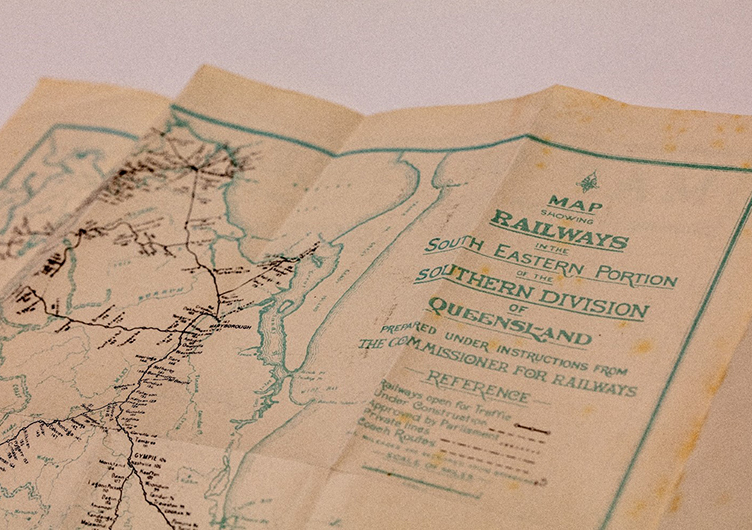
1929 Map of Queensland Rail
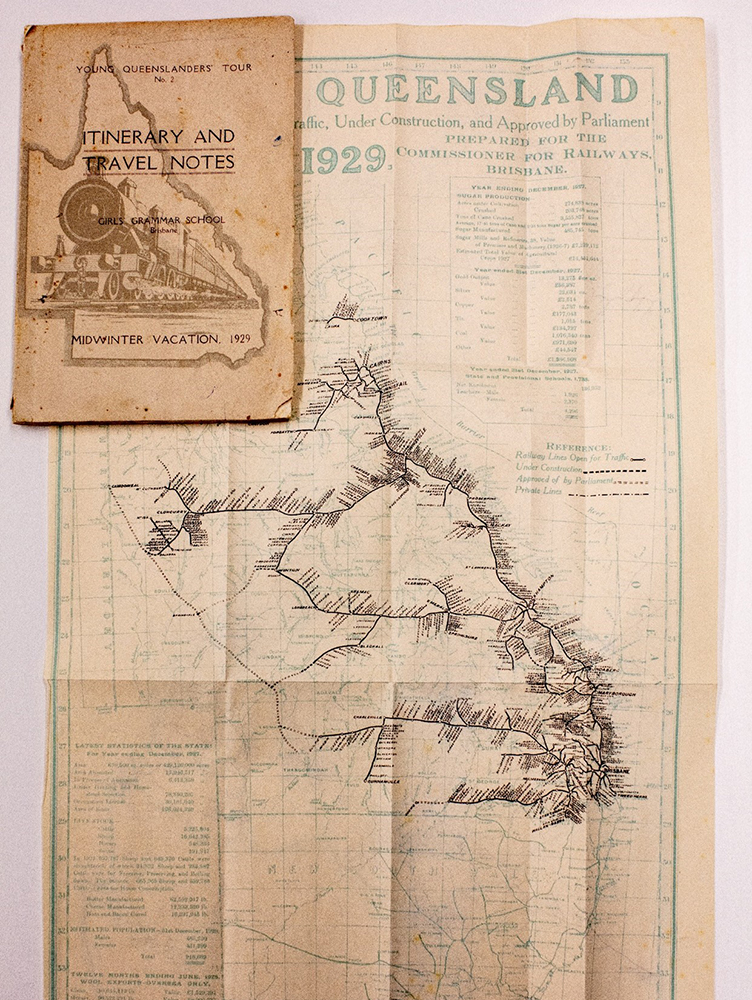
Itinerary with foldout railways map
These tours for school students were the brainchild of the Commissioner for Railways, Mr JW Davidson, whose advocacy of the slogan ‘See Queensland first’ was well known. Mr Davidson wanted to give young Queenslanders an opportunity to see the beauty and development of their own state. He had approached North Queensland businesspeople and, with their assistance, organised affordable group tours for school students. Our group of Grammar girls would have enjoyed their train accommodation with sleeping berths, as well as luxurious hotels like the Cairn’s Hotel Pacific and Hides Hotel, the Imperial Hotel at Kuranda, the Kuranda Hotel, and, at Yungaburra, the Lake Eacham Hotel.

In Cairns, the group watched cane being harvested and were given a guided tour of a sugar mill. While in Atherton and touring the Tableland, they observed operations at the silos and were shown the extensive maize farming on the Tableland. Exposure to the luxuriant vegetation, vivid colours, and wonderfully generous people in the North, presented the pupils with plenty of new experiences. The Commissioner of Railways had hoped that this exposure to new places and people would inspire them so they would recount their travel experiences to their families and friends, acting as enthusiastic publicity agents for the charms and famed hospitality of the Far North.
To stimulate even more interest, Mr Davidson offered prizes for the best essays submitted by the young Queenslanders on their impressions of the tour. This is where our Alma Hartshorn enters the story. Once back home, Alma set to writing a beautifully descriptive and detailed account of her time away. Her essay finished with words that would have warmed the Commissioner for Railways’ heart: ‘I should like to … remind Queenslanders that they have no need to go abroad or even to other States to see unsurpassable beauties of Nature.’ Alma’s was one of the winning essays. Unfortunately, we do not know what prize Alma received, but she kept the leather wallet that accompanied her prize and, folded up inside for safekeeping is the newspaper article reporting her winning entry. The wallet, with its treasured clipping still where Alma put it so many years ago, is now lodged safely in the School archive.
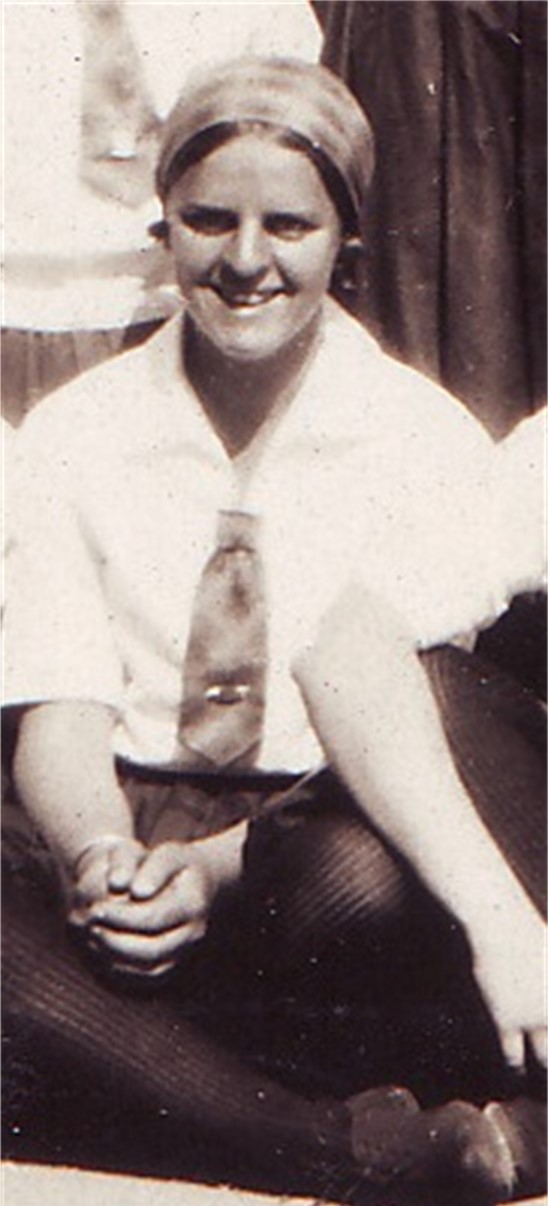
Alma Hartshorn
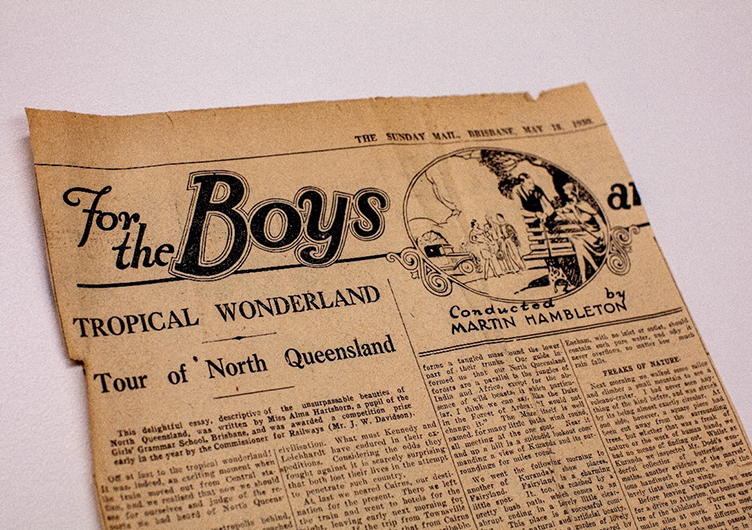
Alma Hartshorn’s published essay
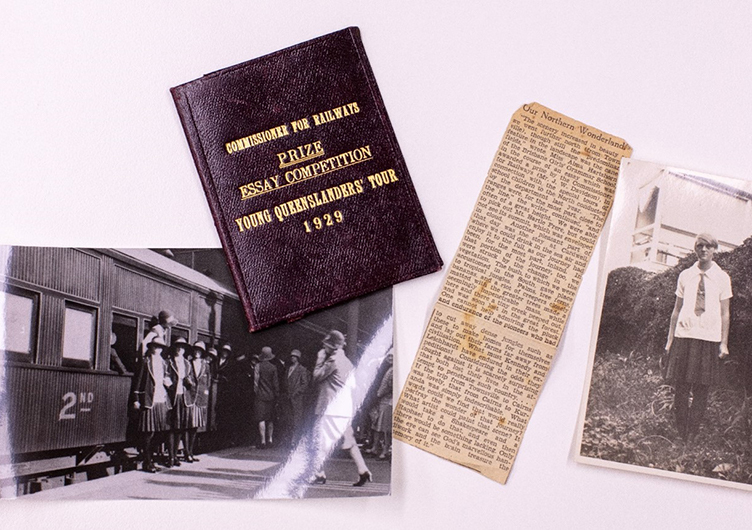
Newspaper article and leather prize document holder kept by Alma Hartshorn
In 1929, this trip lasted 14 days and was the first of its kind for the School. However, it was the beginning of looking beyond the ‘picket fence’ and Spring Hill for extended possibilities to learn. Modern Grammar girls would certainly recognise the philosophy of their School that aims to show them not only how to become better acquainted with the beauty and resources of their state, but also how to venture even further and explore the world.
Mrs Jenny Davis
Librarian, special collections
References:
Tour of North: Young Queenslanders – Big Railway Scheme. The Sunday Mail, 23 June 1929
Hartshorn, Alma’s winning essay titled ‘My impressions of the tour through North Queensland’ published in The Sunday Mail, 18 May 1930.
- Geisel. ‘The sunny North. Dalby Citizen’s tour’. Dalby Herald, 12 July 1929.
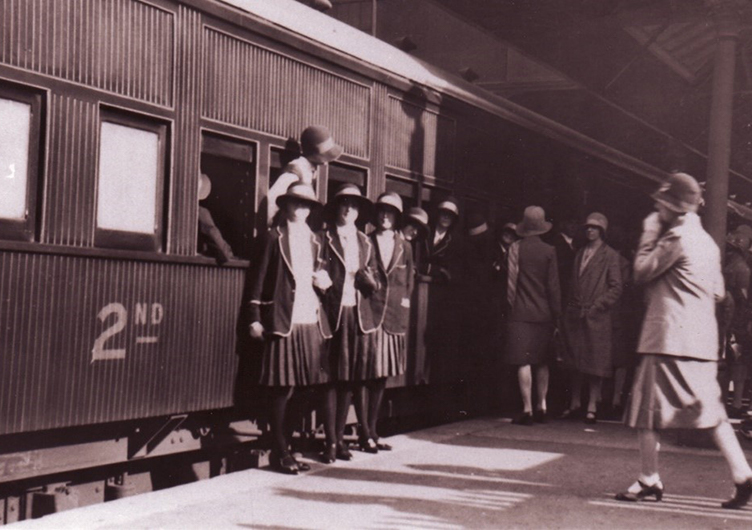
1929 Tour Group departing from Brisbane railway station. It is interesting to note the skirts worn by the Grammar girls
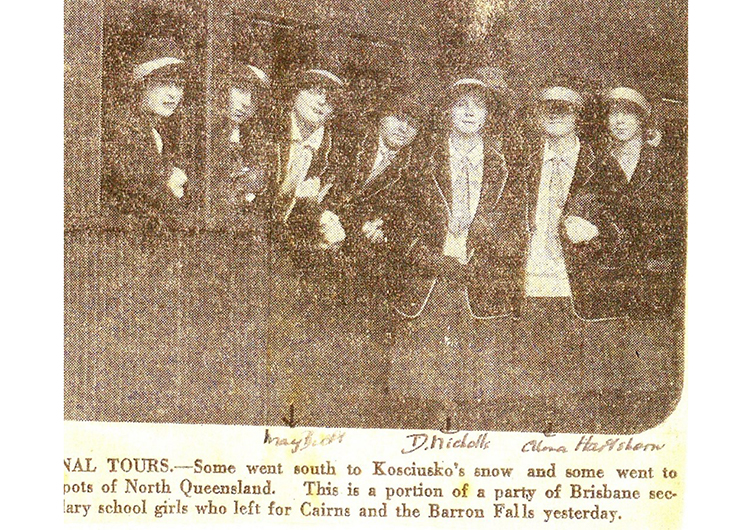
‘Educational Tours’, Evening News (Rockhampton, Qld.: 1924 - 1941), Thursday 4 July 1929, p 16

